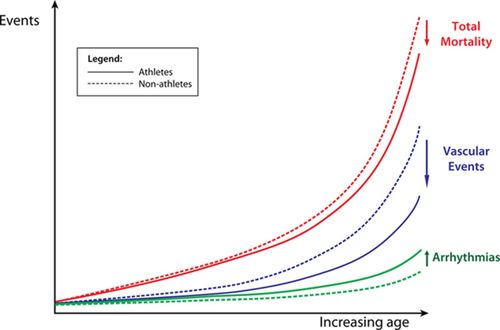Archive for June, 2021
The endothelial glycocalyx
The endothelial glycocalyx is a gel like substance that lines the microcapillaries. It seems that when this is damaged or exposed to inflammation it triggers much of the degradation we see in capillary function with aging.
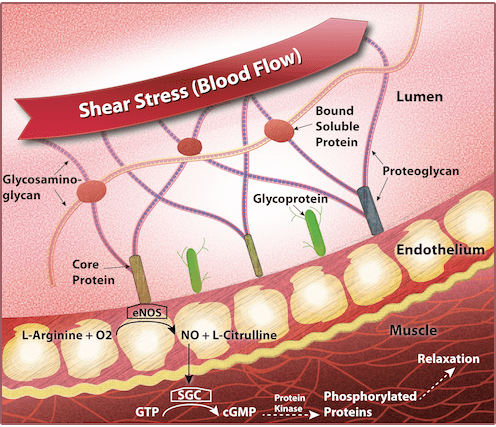
Structure of endothelial glycocalyx and its activation of vascular muscle relaxation via nitric oxide (NO) in response to increased shear force.
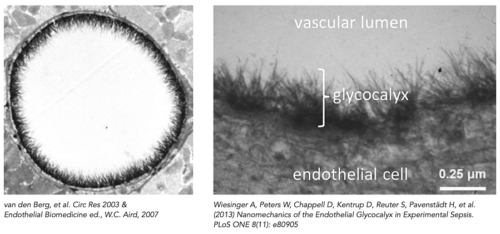
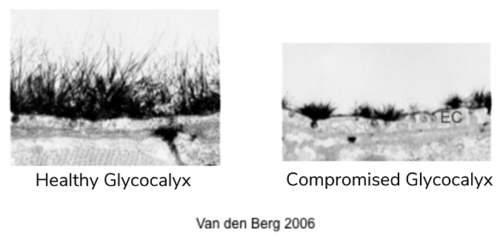
The endothelial glycocalyx:
- Regulates vascular permeability and fluid balance due to the large size and negative charge of its glycosaminoglycans.
- Provides a physical barrier against inadvertent adhesion of platelets and leukocytes to the vascular wall.
- Regulates coagulation as many of mediators of coagulation pathway are buried inside the glycocalyx under normal physiological condition.
- Functions as a mechano-sensor and transducer of the shear-force inside blood vessels to regulate the synthesis of nitric oxide (NO) in response to the blood flow
Sulfated polysaccharides from seaweed have been found to be able to prevent and repair the damage to the endothelial glycocalyx.
These polysaccharides are available in supplement form in a product called Arterosil. Arterosil is a proprietary blend of compounds that can not only improve EGC function and arterial flexibility, but also reduce blood pressure, prevent endothelial inflammation, and slow or even reverse existing plaque build up on arterial walls.
Glycocalyx Damage and Associated Pathologies
The endothelial glycocalyx is a delicate structure and can be damaged under many conditions. The primary contributors to breakdown of the endothelial glycocalyx are high blood glucose, oxidative stress and inflammation. Pathologies associated with impaired endothelial glycocalyx include:
- Coronary heart disease
- Hyperglycemia
- Diabetes
- Renal diseases
- Lacunar stroke
- Severe trauma
If you want more info on the supplement including research studies refer to https://arterosil.com/
Heres a similar supplement made from a different seaweed https://microvascular.com/endocalyx-anti-aging-supplement/
If you want proof of microcirculatory function in the form of medical testing refer to https://glycocheck.com/
PS: Dont worry folks I will dig to the bottom of this & find a cheap bulk supplier for effective seaweed supplementation
PPS: Fucoidan (brown seaweed extract) does the job. Available in bulk on aliexpress. Also many brands on Ebay & Amazon. hyaluronan also helps.
More supplements to improve microcirculation
- Mango powder or dry fruit
- Beetroot
- Vitamin D (high dose)
- Cocoa powder (dark chocolate)
- Yerba Maté Tea (caffeine however reduces brain circulation)
- Chewing gum improves cerebral blood flow & probably occipital too
- Ginkgo Biloba
The hardest job I never did
The hardest job I never did is forestry. All my best mates did it. I tried for one day, spewed up in the truck on the way there then red lined all day in the stinking summer heat.
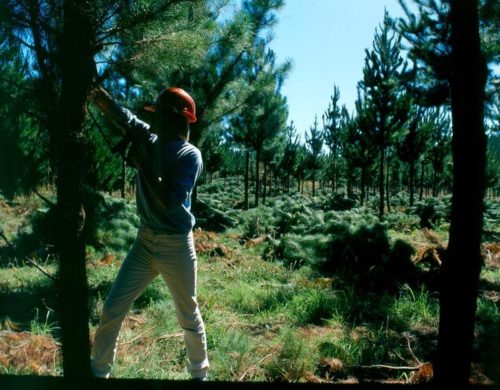
This guy is low pruning – easy
My heart was pumping at full speed all day long like a jack hammer. Sweat came from every pore from head to toe.
It was like running a full body marathon all day long. My mates did it for months on end. The problem for me was the job was as dumb as fuck. Basically you climbed the ladder & cut off the branches then moved to the next tree. Over and over for weeks on end. No thanks boys. Get fucked.
I’ll explain the routine a little better. The job I did for one day was high pruning of radiata pine. The pay rate was 80 cents per tree.
A fucking joke. Anyway so regardless of the ground around the trees, hilly, bushes & branches everywhere you had to carry a 12 foot aluminum ladder to the tree. Lean it against then climb up & stand on the very top rung of the ladder & reach up as high over head as you could. There were branches all around so its not in thin air. Nah its in thin air but if I recall correctly you had an annoying safely belt which slowed the job down so much – well you know.
The job is also known as Silviculture.
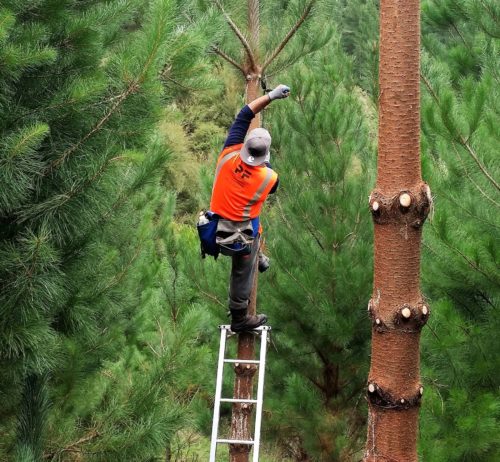
This guy is high pruning – hard
To make it worse our ladders had hooks at the top & we were asked to lift the bottom of the ladder to over our heads. Then the hook would secure it to the tree. So the top of the ladder was 12 feet plus your height with arms extended over head. About 20 feet then you had to haul ass onto the ladder thats above your head. Climb to the top and stand on the top rung and reach up above your head again.
This is the hardest way to high prune and they made me do it on the first day. The actual height we pruned from was about 30 feet I guess. Thats the height on the tree at which you would start pruning – 3 stories up. Then you would work your way down lopping or sawing every single branch off the trunk.
OK so the tools were hand tools. A hand saw & a pair of loppers. If you dropped them you had to climb back down and start again. Cunt of a job. It was too dangerous to use a chainsaw.
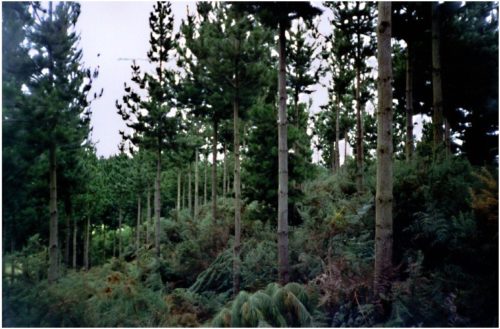
Rough ground made it hell
OK that sounds hard right & the pay was 80 fucking cents.
I totally busted my ass with everything I had at 18 years old and managed to do 44 trees in one day. On an empty guts after chucking up.
The other guys were doing way more maybe 80 trees – still making crap pay. The absolute champion guys record was 180 trees. That’s so damn hard its demonic. But my mates were super fit hard men. Resting pulse rates around 40 bpm.
Anyway I was too smart to fall for it & passed on a career as a lumberjack. My old mates are still proud of the fitness they attained as teenagers – 30 years later.
PS: Some times I wonder if I should make a few phone calls & do it for a couple of months.
Good News – Stretching more effective than low intensity cardio for Hypertension
Yippee – I always wanted a good reason to improve my flexibility
It all comes back to what I have posted about previously – Microcirculation
75% of your circulation is capillaries. If they are blocked or tight what happens?
Hypertension. Now this suggests that poor ROM will correlate with hypertension.
Anyway here’s the research:
“Stretching is Superior to Brisk Walking for Reducing Blood Pressure in People With High–Normal Blood Pressure or Stage I Hypertension”
The study was conducted over eight weeks, using two randomly assigned groups of older men and women (mean age 61). The 40 participants were monitored as they compared the benefits of stretching for 30 minutes to a 30-minute walk.
The group assigned to stretch was observed having greater reductions in blood pressure across all three of their measurements: sitting, lying down, and over 24 hours with a portable monitor.
Co-author of the study and U of S kinesiology professor Dr. Phil Chilibeck said that although the findings show stretching might have a hand up on a brisk walk when it comes to reducing blood pressure, there’s no reason to substitute one for the other.
“I don’t want people to come away from our research thinking they shouldn’t be doing some form of aerobic activity. Things like walking, biking, or cross-country skiing all have a positive effect on body fat, cholesterol levels, and blood sugar,” said Chilibeck.
While the study protocol had participants stretching for 30 minutes at a time, Chilibeck suspects the same benefits can be achieved by doing a shorter routine that emphasizes the larger muscle groups in the legs, particularly the quadriceps and hamstrings. Yoga produces similar reductions in blood pressure, he said.
Chilibeck said that those walking to reduce blood pressure should continue to do so, but should consider adding some stretching sessions to their routine.
Obviously it comes back to ROM – range of motion as defined by Hippensteel. Chilibeck & Hippensteel are both Kinesiologists.
Theres another study from 2015 on flexibility & arterial stiffness. “Four weeks of regular static stretching
reduces arterial stiffness in middle-aged men”
Only two research papers but the key to it is “Microcirculation”.
Traditional Japanese & Chinese medicine for Microcirculation
Kampo is the name for Japanese traditional medicine.
Oketsu is disease of the blood and circulation. Scientific research has been done into some of the herbal medicines of Kampo.
Research papers include:
Acupuncture and Ryodoraku have relevance to microcirculation stimulation but you will have to look for a professional for more info.
Research papers on TCM include:
Microcirculation: A Foundation of Health
This post is from the following site:
https://ndnr.com/botanical-medicine/microcirculation-a-foundation-of-health/
Robin DiPasquale, ND, RH (AHG)
Microcirculation is defined as the flow of blood through the smallest blood vessels in the body. This includes capillaries, of course, but also arterioles and venules. Enhancing microcirculation in the body will increase oxygen-carrying ability and use, deliver nutrients, remove metabolic waste and toxins, support and strengthen the immune system, and increase adenosine triphosphate production. Increasing microcirculation can enhance the function of all tissues, organs, and glands and can bring a sense of greater overall well-being.
The study of microcirculation has developed into a specialty area in allopathic medicine. A professional organization called The Microcirculatory Society, Inc was founded in 1954 to encourage the exchange and dissemination of information about the microcirculation. The society holds annual meetings and has a monthly journal titled Microcirculation.1
In Traditional Chinese Medicine, the understanding is that “the qi moves the blood; the blood carries the qi.” Qi and blood flow together through the vessels. They are dependent on each other.
As the body ages or develops a chronic disease, the vital qi is diminished. The blood viscosity is increased and becomes more sticky, or agglutinated. In southern Appalachian herbal medicine, this is referred to as “thick blood” and is considered an etiology for many, if not all, chronic diseases. In addition, the spleen is not as effective in removing old damaged blood cells, capillaries are less flexible, and blood cells are more rigid and can be angular shaped, making it more difficult for them to pass through the capillaries. When qi and blood are not in motion, this is considered blood stasis, a Traditional Chinese Medicine diagnosis that is being evaluated relative to chronic diseases, especially those disorders associated with aging.2
In addition to what we do in our daily life to optimize our own innate pumping of the blood through the body, there are multiple modalities of healing that can be used to enhance the microcirculation. Exercise or movement of any form is significant. This can include any type of cardio work, weight training, yoga, tai chi, and so forth. Qi gong, pranayama, and other energy work move qi, so the blood will follow. Acupuncture, massage therapy, laser therapy, and far infrared sauna can all be considered. I am currently using pulsed electromagnetic field application in my practice, which I find amazing in its outcomes.3 This article will focus on herbal medicine and gemmotherapy.
For new blood to be generated, old blood that is not vital must be removed. If blood is not flowing well, you cannot give nourishing supplementation while the pathological influence remains. Move the blood first, and then give the nourishment.4 Herbal medicines and gemmotherapy can be used for moving blood stasis and for nourishing blood.
There are a group of herbal constituents that best support circulation. Phenolic compounds, especially flavonoids, are found extensively in brightly colored fruits and vegetables; they correct capillary fragility and are important in microcirculation. The anthocyanins are the red, blue, and purple flavonoid-related compounds, also key in enhancing capillary strength.5 The sesquiterpenes are 15-carbon terpenoids that seem to act as anti-inflammatory agents, tonifying muscles and nerves and strengthening connective tissue.6 The pungent principles seem to increase circulation through an increase in catecholamine secretion, especially adrenaline from the adrenal medulla, with the effect of stimulating the metabolism.7
Herbal Action Groups
In supporting circulation with herbal medicine, consider the following herbal action groups, with some examples of herbs to choose from. These can be used as simples or in formula.
Warming herbs increase peripheral flow and perfusion. These include Capsicum frutescens (cayenne), Zingiber officinale (ginger), Zanthoxyllum americanum (prickly ash), Piper nigrum (pepper), and Allium sativum (garlic).
Alteratives are blood purifiers and blood cleansers. These include Arctium lappa (burdock), Rumex crispus (yellow dock), Iris versicolor (blue flag), Scrophularia nodosa (figwort), Smilax species (sarsaparilla), and Trifolium pratense (red clover).
Diaphoretics eliminate toxins and fluid via perspiration through the skin. These include Eupoatorium perfoliatum (boneset), Achillea millefolium (yarrow), Sambucus nigra (elderberry flowers), Z officinale (ginger), Mentha piperita (peppermint), and Cinnamomum cassia (cinnamon)
Diuretics eliminate toxins and fluid through the kidneys and bladder. These include Taraxacum officinale (dandelion leaf), Juniperus communis (juniper), Petroselinum crispum (parsley), and Zea mays (corn silk).
Lymphatics keep lymph fluid in motion. These include Calendula officinalis (marigold), Galium aparine (cleavers), and Phytolacca americana (poke).
Venous support may be obtained from the following: Sorbus species (service tree), Hamamelis virginiana (witch hazel), Aesculus hippocastanum (horse chestnut), and Ruscus aculeatus (butcher’s broom).
Capillary wall and connective tissue integrity may be enhanced by the following: Equisetum arvense (horsetail), Centella asiatica (gotu kola), Vaccinium myrtillus (bilberry), Pinus species (oligomeric proanthocyanidin complexes in pine bark), and Vitis vinifera (oligomeric proanthocyanidin complexes in grape seed).
To treat blood stasis by invigorating and moving the blood,8 try the following: Ligusticum wallichii (lovage), Salvia miltiorrhiza (Chinese red sage), Curcuma longa (turmeric), Leonurus heterophyllus (Chinese motherwort), Rosa chinensis (Chinese tea rose) (or any rose will work here), Boswellia carterii (frankincense), and Commiphora myrrha (myrrh).
Blood tonics are warming, nutritive, and high in minerals.8 These include the following: Rehmannia glutinosa (Chinese foxglove) cooked in wine, Polygonum multiflorum (black-haired Mr He), Angelica sinensis (dang quai), Paeonia lactiflora (white peony), Lycium chinense (wolfberry), and Euphoria longan (longan fruit).
A Few Specific Herbs to Consider Working With
In any circumstances that require more effective circulation, begin at the pump, the heart. The following are a few specific herbs to consider working with.
Crataegus species (hawthorn) will increase the contractility of the heart muscle. This has positive inotropic and negative chronotropic actions, increasing the output of blood with each pump of the heart and the movement of blood through the entire system. The flowers have more flavonoids than the berries, although both are used. Another heart herb to consider is Terminalia arjuna (arjuna). The flavonoids act as anti-inflammatory agents, and the glycosides are cardiotonic. Terminalia arjuna also has positive inotropic action.
Salvia miltiorrhiza (dan shen [Chinese red sage root]) is bitter and slightly cold and enters the channels of the heart and liver: “It quickens the blood, moves the blood, and regulates transportation of blood fluid. The Da Ming [Mingyi Bielu, circa 500 ad] and Ri Hua [Rihuazi Bencao, 713 ad] refer to this as ‘eliminating stasis and engendering the new,’ with the implication of freeing and supplementing.”9 Salvia miltiorrhiza can move blood stasis and can nourish blood.
Polygonum cuspidatum is an invasive plant with big medicine. It is high in reservatrol, a major antioxidant-acting compound being used to assist in chronic conditions, such as heart disease, diabetes, arthritis, and cancer.10
Pycnogenol-containing herbs, including Pinus species (pine bark) and V vinifera (grape seed), are powerful antioxidants. They have specificity for rebuilding collagen, enhancing elasticity and resiliency, and strengthening capillary vessels. Centella asiatica (gotu kola) can also be considered one of the top herbal choices for enhancing the function of connective tissue.
A Gemmotherapy Group to Consider Working With
Gemmotherapy is a collection of plant extracts made from the bud or new growth of plants, mostly trees.11 The embryonic plant parts contain growth hormones and enzymes that are unavailable in the adult plant. These remedies can assist in the regeneration of organ and tissue structure and function through their herbal actions. They can be used individually, grouped together, or combined into formulas.
Sorbus domestica (service tree) is a regulator of venous circulation, decreasing serum viscosity, moving congestion, and tonifying venous walls. It works well in combination with Castanea vesca (sweet chestnut) in moving lymph channels. Aesculus hippocastanum (horse chestnut) contains aescin, a saponin complex, as well as the flavonoids quercetin and epicatchin, all strengthening the venous connective tissue. When used in combination with liver-moving gemmotherapies, venous circulation is facilitated. For lower leg circulation, Populus nigra (black poplar) modulates inflammation. Vaccinium myrtillus (bilberry), whether used as a food, herb, or gemmotherapy, improves microcirculation through the actions of the anthocyanidines, resveratrol, and many other flavonoids.
Thinning the blood viscosity can be one of the more important mechanisms in enhancing microcirculation, especially because thick blood is linked specifically to the development and complications of most chronic diseases. Cornus sanguinia (dogwood) acts as an anticoagulant, used for sticky or thick platelets or elevated platelet counts. It contains betulinic acid, as does Betula pubescens (white birch), which acts as a detergent, facilitating drainage of the entire vascular system. Although Citrus limonum (lemon twig) is considered an adjuvant remedy in support of other stronger and longer-acting gemmotherapy remedies, it increases blood flow quickly, enhancing circulation in all organ systems.
As support remedies, Cercis siliquastrum (Judas tree) has antisclerotic and anticoagulant action, and Syringa vulgaris (lilac) acts as an antispasmodic, facilitating vasodilation, especially of the coronary and carotid arteries. Syringa vulgaris is dosed very low initially to prevent too rapid of perfusion to these vital organs.
Alnus glutinosa (European alder) and Alnus incana (gray alder) are inflammation modulators, antioxidants, and anticoagulants. They decrease capillary fragility and have the potential to increase circulation by initiating angiogenesis.
Vitis vinifera (grape seed) and Pinus montana (mountain pine) contain pycnogenols, some of the more potent antioxidants in our medicinary. The gemmotherapy preparation of Crataegus oxycanthus (hawthorn) encompasses all the heart and circulatory system support of the herbal preparations, and when using gemmotherapy, the healing properties of the flower and fruit are both present in the extraction of the bud.
Via the ginkogolides and bilobalides, Ginkgo biloba (ginkgo) increases cerebral circulation and peripheral circulation, thins the blood by anticoagulant action, and dilates blood vessels, overall increasing blood flow and circulation throughout the body. Although Rosmarinus officinalis (rosemary) is considered primarily a liver and gallbladder gemmotherapy source with its antispasmodic, hepatoprotective, and cholagogue and choleretic actions, the flavonoids modulate inflammation, and the potent volatile oils move stagnant chi, enhancing microcirculation.
Gemmotherapy using Tilia tomentosa (linden), which also has the name Tilia cordata, is a gentle but powerful cardiac remedy. It primarily influences the nervous system to address rapid heart rate and an overall sense of anxiety, which can limit circulation to the heart and throughout the entire cardiovascular system.
Robin DiPasquale, ND, RH (AHG) earned her degree in naturopathic medicine from Bastyr University in 1995 where, following graduation she became a member of the didactic and clinical faculty. For the past eight years she has served at Bastyr as department chair of botanical medicine, teaching and administering to both the naturopathic program and the bachelor of science in herbal sciences program. Dr. DiPasquale is a clinical associate professor in the department of biobehavioral nursing and health systems at the University of Washington in the CAM certificate program. She loves plants, is published nationally and internationally, and teaches throughout the U.S. and in Italy on plant medicine. She is an anusara-influenced yoga instructor, teaching the flow of yoga from the heart. She currently has a general naturopathic medical practice in Madison, Wis., and is working with the University of Wisconsin Integrative Medicine Clinic as an ND consultant.
References
The Microcirculatory Society, Inc. News. http://microcirc.org. Accessed August 24, 2011.
Dexin Y. Aging and Blood Stasis: A New TCM Approach to Geriatrics. Boulder, CO: Blue Poppy Press; 1995.
BEMER 3000 pulsed electromagnetic field application (PEMF). http://www.bemeramerica.com. Accessed August 24, 2011.
Dharmananda S. Salvia and the history of microcirculation research in China. http://www.itmonline.org/arts/salvia.htm. Accessed August 24, 2011.
Mills S, Bone K. Principles and Practice of Phytotherapy. New York, NY: Churchill Livingstone; 2000.
Harrison J. Aromatherapy. Clifton Park, NY: Milady, Cengage Learning Inc; 2008.
Mills S, Bone K, Principles and Practice of Phytotherapy. New York, NY: Churchill Livingstone; 2000.
Bensky D, Gamble A. Chinese Herbal Medicine Materia Medica. Seattle, WA: Eastland Press; 1986.
Chace C, Liang ZT. A Qin Bowei Anthology: Clinical Essays by Master Physician Qin Bowei. Brookline, MA: Paradigm Publications; 1997.
Zhao KS, Wu KY, Tian Y, et al. The effect of Polygonum cuspidatum on the microcirculation in burned skin. In: Chang HM, Yeung WH, Tso WW, Koo A, eds. Advances in Chinese Medicinal Materials Research. Philadelphia, PA: World Scientific; 1984:591-595.
DiPasquale R. Introductory Training Manual: Gemmotherapy. New York, NY: Gemmos LLC; 2011.
Some bad medical news
I’m 53 in a few weeks. If you read some posts back I dealt with a high blood pressure problem. Well the good news is I cut out red meat, increased cardio a bit & fixed it.
The bad news is it did some damage. I got a retina scan 10 months ago & again a couple of days back. There is a micro aneurism.
A teensy bulging blood vessel on the back of my eyeball. It doesn’t mean I’m immediately gunna die but it does mean I need to sort my shit out.
The plan, more raw whole food in the diet. More HIIT & PHA training. Hbot, PEMF, Infra red therapy, intermittent compression sleeves, cryotherapy, pycnogenol etc.
I need to fix my micro circulation.
Ultimate Human Performance – Flexibility & ROM
Heard of the book “Cant Hurt Me” by David Goggins? Its a good book, easy to read & very motivational.
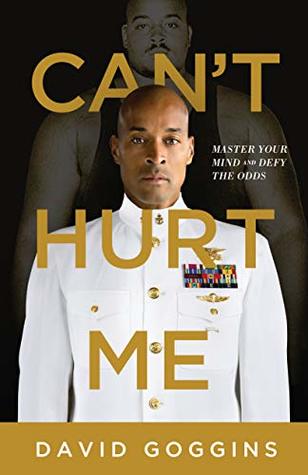
Goggins was a regular guy with a tough childhood that became a special forces operator & eventually retired to become an ultra endurance athlete. One of the best in the world.
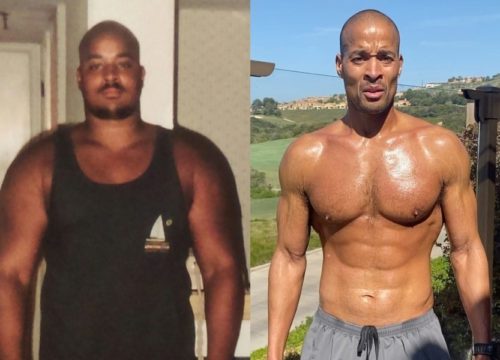
However sports people need to remember that there are millions of regular every day people that are just as fit. Goggins has a resting heart rate around 30 BPM. But my old lumberjack buddies when I was a teen did too. Heart rates of 40 BPM were normal from hellish weeks of pruning pine trees by hand. The top guy pruned 180 trees in a day. That’s an insane feat.
They were regular young guys that were as fit as super athletes & special forces. Did it go to there heads? Of course it did. That’s another story. Unfortunately we all had cannabis & alcohol problems back in the day. Many still do.
Anyway when you perform like this for a long time you get injured. You end up a broken man. Very few people ever 30 do that forestry job.
Goggins is injured bad & isn’t 50 yet. His solution – Ultimate Human Performance
This is a stretching & flexibility program from a kinesiologist with the surname Hippensteel. Hippensteel’s brother is an over 60 masters crossfit champion.
I’ve checked the program out & its excellent. Plain language and no BS. The exercises are practical and to the point.
Joe Hippensteel
So you need to check it out for yourself.
Ultimate Human Performance https://www.ultimatehumanperformance.com
PS: I guess that for me was the big takeaway from Goggins book coz I too had a rough childhood, hung with some bad ass characters in the day. So for me that part of the book was not so unusual.
